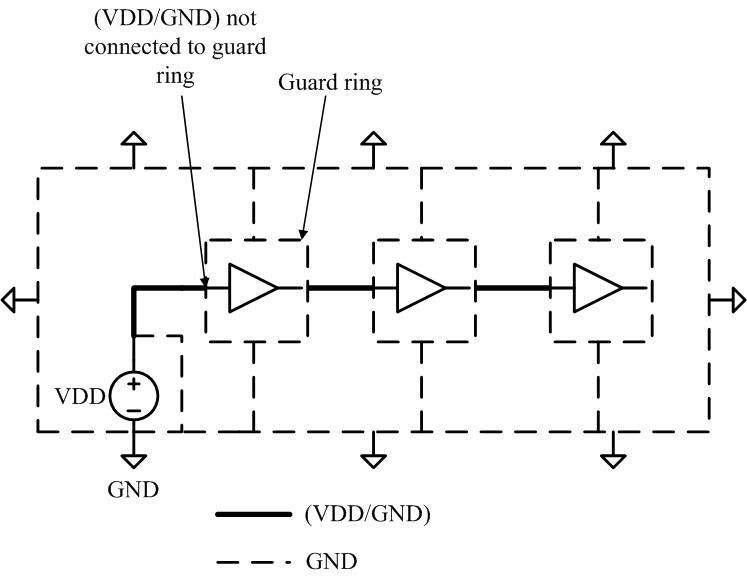Post by aaron_do on Jun 12th, 2007, 12:52am
Hi Jerry,
regarding your papers on noise reduction, are you saying that rather than tapping ground from any point, we should have the ground signal originate from a single point and route it with VDD. e.g. VDD uses M5 and GND uses M4, and the are routed together. through the system from a single origin. Also does this apply to guard rings? My intuition is that the guard rings should be tapped from the lowest potential, and not from the VDD/GND that is routed through the chip.
heres a picture of what i think should be done...

is that right?
not sure if this qualifies as a new topic or not...sorry
thanks in advance,
Aaron